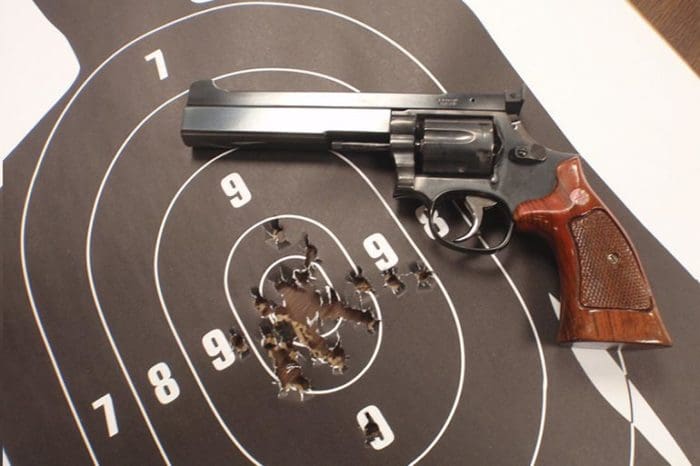We all know the conventional wisdom about self-defense shootings is the Rule Of Three: three rounds in three seconds under three yards. The same is said to be mostly true about close-range officer-involved shootings as well (although not everyone quite believes this).
Records of civilian defensive shootings have mostly borne this out. Very few defensive shootings occur at long distances and very few involve a reload, if even emptying a magazine. To say nothing of the fact that shooting an attacker at longer ranges can be difficult to justify as a defensive gun use.
However, exceptions to the 3-3-3 rule certainly exist. Many times, three rounds simply aren’t enough. This is why we train for a tactical reload and also why it’s good to carry either a spare magazine or a backup pistol if you can.
It’s also a good idea to devote at least some time to practicing longer-range pistol shooting, as the skill may be called upon one day. There are plenty of real-world examples of LEOs, military personnel and even civilian shooters successfully engaging hostile targets with a handgun at long range.
One of the most famous was the most famous gun battle involving Wild Bill Hickok, specifically his shootout with Davis Tutt in 1865. Tutt, incensed over a gambling debt (a pocket watch) opened fire on Hickok from about 75 yards away. Hickok drew, calmly acquired a sight picture and fired, dropping Tutt with a single shot to the heart.
And that was with a .36-caliber ball over black powder and not today’s ammo.
Another famous example is that of Walter Walsh. Walsh joined the FBI in the 1930s, surviving upward of 20 shootouts (Walsh shot and killed Al Brady, Public Enemy #1 at the time, in a brutal shootout in 1937) and, as a reserve officer in the Marine Corps, left for the Pacific Theater in World War II. Walsh and some fellow Marines were pinned down by a sniper, firing from 90 yards away. Walsh lined up his rear sight and front sight, fired a single shot from his sidearm, and dropped the sniper.
That was with a GI 1911. Imagine what the modern version could do in skilled hands. Walsh would later represent the United States shooting pistol events in the 1948 Olympics and served as the commander of the USMC’s marksmanship training corps, so it’s safe to say he possessed singular skill at distance shooting.
Granted, that happened under the color of war, but keep in mind that mass shooters sometimes employ long guns. This is what a handgun is capable of doing in skilled, practiced hands. Of course, that skill includes good sight alignment, knowledge of bullet drop and shooting range for the cartridge, a stationary bad guy downrange, and a solid shooting position.
Then there is the example of Vic Stacy, a civilian who intervened when a fellow resident of the RV park he lived in went on a shooting spree. The shooter, one Charles Conner, murdered his two neighbors and started shooting the area up. A law enforcement officer arrived, but was pinned down by fire.
Stacy grabbed his .357 Magnum revolver, found a tree to rest it against and fired from 56 yards away. The first shot hit Conner in the leg, causing him to drop the ground, but also to return fire in Stacy’s direction. After his attention was back on the policeman taking cover behind the cruiser, Stacy re-emerged from behind his RV and fired four more times, hitting Conner at least three times and stopping the fight.
Read an excellent account of this incident here.
The point?
If you carry for self-defense, get some practice in at longer ranges in addition to the usual three, five and seven yards. It just might save your life.
